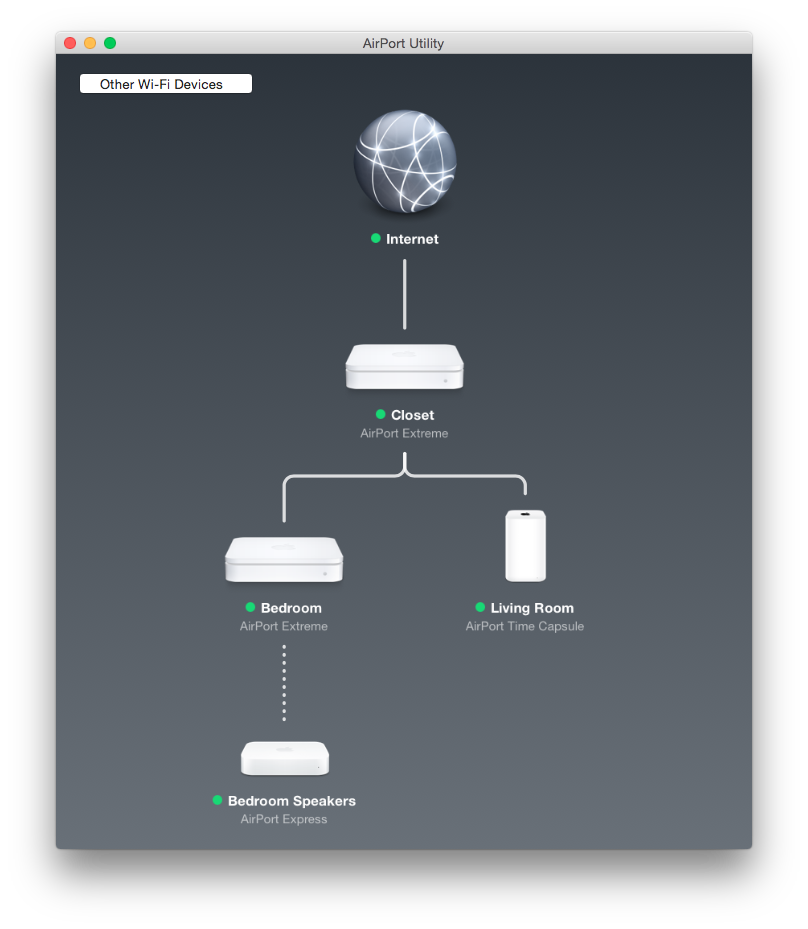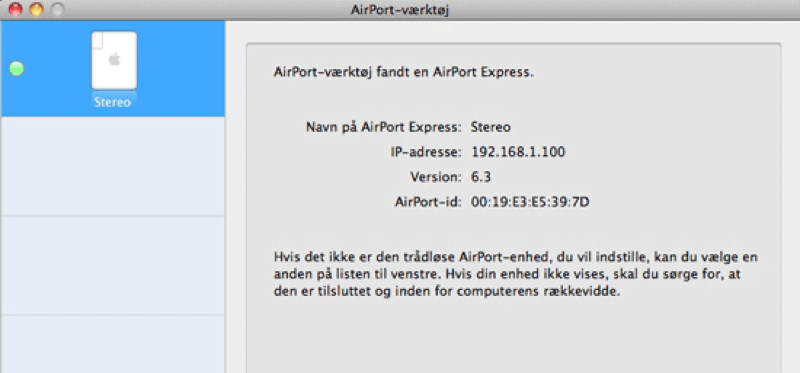

#Osx airport utility mac os x
Using the airport Wireless Tool in Mac OS X Command Line Yes, that giant cryptic path through the depths of Mac OS X is where Apple hid the wonderful airport utility, but by running the above command you have just linked that long path to the much shorter ‘airport’, which is great.

Whichever method you go with, the sudo command will prompt you for a root password, enter it and hit return. Note the only difference between modern macOS versions and prior versions is where you will be placing the symbolic link, which is in /usr/local/bin/ versus in /usr/sbin/ $ sudo ln -s /System/Library/PrivateFrameworks/amework/Versions/Current/Resources/airport The above may be a bit hard to read on some browsers, so alternatively you can use the following (it does the same thing, just split into two commands):įor Mac OS Catalina, Mojave, and newer macOS versions Sudo ln -s /System/Library/PrivateFrameworks/amework/Versions/Current/Resources/airport /usr/sbin/airport Sudo ln -s /System/Library/PrivateFrameworks/amework/Versions/Current/Resources/airport /usr/local/bin/airportįor Mac OS X High Sierra, Sierra, El Capitan, Mavericks, and earlier Creating a symbolic link to airport is very easy, in the Terminal type the following:įor MacOS Mojave, Catalina, Big Sur, and newer MacOS releases The first thing you’ll want to do is create a symbolic link to the airport command, because it is situated in a very inconvenient location with a deep path, this helps for quick usage. First, Get Easier Access to airport Wi-Fi Tool In case you were wondering, yes the command line airport tool exists in nearly all versions of Mac OS X, even modern versions that stopped calling wireless networking ‘airport’ and refer to it as Wi-Fi. The tools can also provide a wealth of additional raw data as well.How to Access & Use airport Command Line Tool on Mac OS Sudo ln -s /System/Library/PrivateFrameworks/amework/Versions/Current/Resources/airport /usr/local/bin/airportīetween running airport -s (which shows the BSSID of every Wi-Fi network one’s Mac can pick up) and airport -I (which shows the BSSID of my currently connected network), I found what I need. Since I’m on Catalina, I first ran this command to easily use the “airport” command in the Terminal:

It is named “airport” since Apple’s Wi-Fi settings used to be referred to as “Airport” in previous versions of Mac OS X (it was changed prior to the macOS rename) to match Apple’s Airport Wi-Fi hardware. Since I’m on a Mac, I needed to find a way to run a similar command using Terminal on the Mac.Įnter “airport”, Apple’s command-line wireless utility. Netsh wlan show networks mode=Bssid | findstr “BSSID” On Windows, it can be done running PowerShell as Admin and running this command: I had to locate the BSSID of Wi-Fi networks for a Microsoft Teams deployment.


 0 kommentar(er)
0 kommentar(er)
